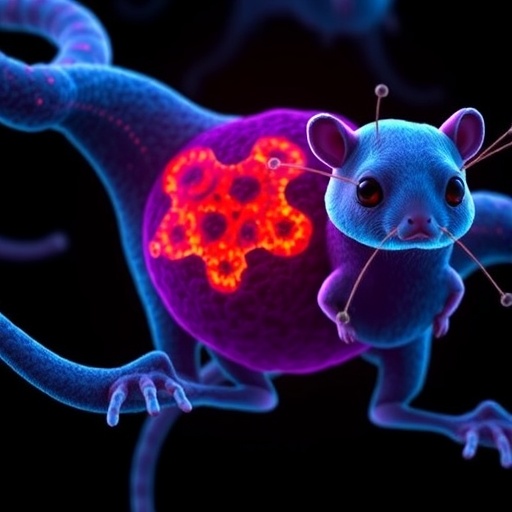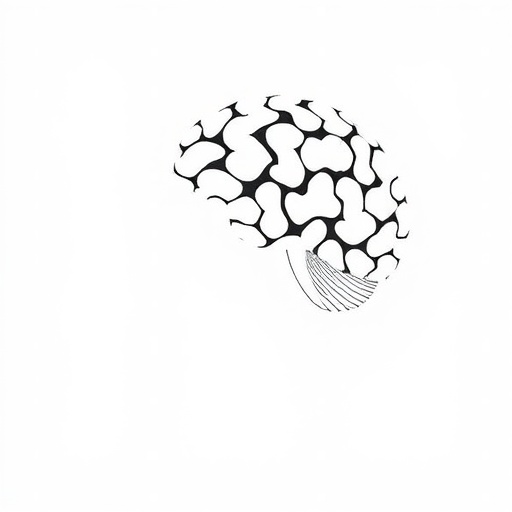In a landmark study shaking the foundations of cancer immunotherapy, researchers have illuminated a novel pathway to combat melanoma in aged hosts, revealing that selective targeting of PD-L2 unleashes potent anti-tumor immunity through the intertwined actions of IL-17 and IFNγ signaling. This breakthrough emerges in response to the long-standing challenge of diminished immunotherapy efficacy seen with advancing age, a paradox confounding oncologists worldwide. The study, published recently in Nature Communications, spearheaded by Ontiveros, Garcia, Murray, and colleagues, not only redefines the therapeutic potential of immune checkpoint blockade but also intricately maps the immunological circuitry that rejuvenates anti-cancer defenses in the elderly.
Immunotherapy has revolutionized melanoma treatment over the last decade, primarily through blockade of the PD-1/PD-L1 pathway, revitalizing exhausted T cells to eradicate tumors. However, clinical success has been variably tempered by patient age, as older individuals often experience blunted responses due to age-associated immunosenescence and an altered tumor microenvironment. Conventional PD-1 or PD-L1 inhibitors, while efficacious in younger cohorts, fail to overcome these hurdles consistently in aged hosts. The present study innovatively pivots focus from PD-L1 to PD-L2, a related but less-explored ligand of PD-1, unveiling its distinct immunomodulatory role specifically within the context of aging and melanoma.
Using well-established murine melanoma models that faithfully recapitulate human aging, the researchers demonstrated that antibody-mediated blockade of PD-L2 markedly suppressed tumor growth exclusively in aged mice, whereas young counterparts showed negligible benefit. This age-dependent therapeutic window underscores PD-L2’s unique contribution to immune evasion in senescence-altered tumor milieus. Crucially, the anti-PD-L2 therapy enhanced infiltration and activation of CD8+ cytotoxic T lymphocytes, key effectors in tumor control, suggesting reinvigoration of anti-tumor immunity is central to its efficacy.
Diving deeper into the immune signaling cascades orchestrating this phenomenon, the study identified two pivotal cytokines—interleukin-17 (IL-17) and interferon-gamma (IFNγ)—as essential mediators. IL-17, typically associated with pro-inflammatory responses and autoinflammatory conditions, was found to be paradoxically beneficial in this setting. The blockade of PD-L2 elevated IL-17 production predominantly by γδ T cells and Th17 cells within the tumor microenvironment. This increase in IL-17 appeared to prime and attract IFNγ-producing CD8+ T cells, effectively creating a cytokine axis that synergizes potent anti-melanoma activity.
Interferon-gamma, a critical cytokine in anti-viral and anti-tumor immune responses, was also essential for the observed therapeutic effects. IFNγ secretion enhanced antigen presentation, upregulated MHC class I molecules on tumor cells, and promoted apoptosis, thereby facilitating tumor clearance. The orchestrated production of IL-17 and IFNγ created a robust inflammatory milieu counteracting the immunosuppressive microenvironment characteristic of aged melanomas. Notably, disruption of either cytokine’s signaling abrogated the efficacy of anti-PD-L2 treatment, confirming their indispensable roles.
Importantly, these mechanistic insights paint a complex picture distinguishing PD-L2 from PD-L1 within immunosenescent contexts. PD-L2 was highly expressed on tumor-associated dendritic cells, macrophages, and stromal cells in aged hosts but remained underrepresented in younger tumors. This differential expression pattern implies that PD-L2 may contribute to the unique immune suppression observed during aging by engaging PD-1 on T cells, curtailing IL-17 and IFNγ-driven responses. Targeting PD-L2 relieves this blockade selectively in the aged tumor microenvironment, unlike PD-L1 inhibition which lacks this specificity.
The translational potential of these findings is profound. Melanoma incidence and mortality rise with patient age, yet older patients remain underrepresented in immunotherapy trials and often derive less benefit. Anti-PD-L2 antibodies could herald a new class of immune checkpoint inhibitors tailored to restore frontline immunity in elderly cancer patients. Given the distinct cytokine network engaged, combining anti-PD-L2 with agents modulating IL-17 or IFNγ pathways might amplify therapeutic outcomes further, personalizing approaches based on immunological profiles.
Beyond melanoma, this paradigm shift invites exploration into PD-L2’s role across other malignancies where age diminishes immunotherapy efficacy. The delineation of age-dependent immune evasion strategies emphasizes the necessity for age-specific therapeutic designs rather than one-size-fits-all approaches. This study charts a roadmap for integrating immune aging biology with cancer therapeutics, potentially improving survival and quality of life for older cancer patients.
The research also amplifies our understanding of the dualistic nature of IL-17 in cancer biology. Traditionally viewed through the lens of tumor-promoting inflammation, IL-17 here emerges as a critical ally in reactivating anti-tumor immunity under appropriate context, challenging prevailing dogma. The nuanced interplay between IL-17 and IFNγ signals underscores the sophistication of immune regulation during aging, opening avenues for novel immunoregulatory interventions.
Methodologically, the authors employed cutting-edge single-cell RNA sequencing coupled with spatial transcriptomics to meticulously chart immune cell phenotypes and cytokine landscapes within tumors. Functional assays confirmed cytokine dependencies, and genetic knockout models verified mechanistic specificity. These rigorous approaches provided compelling evidence tying PD-L2 blockade to cytokine-driven immune revival, setting a benchmark for future preclinical immunotherapy research.
The implications extend to clinical trial designs, wherein stratification by patient age and immune landscape could refine eligibility and endpoints. Biomarker development focusing on PD-L2 expression and IL-17/IFNγ signatures may enable real-time monitoring and predictive responses, tailoring immunotherapeutic regimens dynamically. The potential to reverse immune senescence-mediated checkpoint inhibitor resistance could redefine clinical management of aged melanoma patients and beyond.
In summary, this pioneering study uncovers a previously uncharted axis of melanoma immune resistance mediated by PD-L2 in the aged tumor microenvironment, demonstrating that its blockade unleashes synergistic IL-17 and IFNγ signaling to orchestrate potent anti-tumor immunity. This paradigm-shifting finding reconfigures our understanding of immune checkpoints in aging and heralds innovative strategies to extend the benefits of immunotherapy across all age groups. As cancer incidence escalates with global aging populations, such advances are critical to fulfilling the promise of precision oncology and equitable care.
Ongoing investigations will undoubtedly probe combinatorial regimens incorporating PD-L2 inhibitors alongside existing checkpoint blockades or cytokine modulators. Furthermore, unraveling the cellular and molecular triggers governing PD-L2 upregulation in aging tissues could uncover additional therapeutic targets. Integrating these insights will be vital to surmounting the age-associated barrier that limits durable cancer immunotherapy responses.
This monumental leap forward exemplifies the power of integrating immunology, oncology, and gerontology to unlock therapies bespoke to aging biology. The next frontier in cancer treatment demands such interdisciplinary innovation, steering us closer to a future where effective, tailored immunotherapies are accessible to all patients irrespective of age. The study by Ontiveros et al. stands as a beacon illuminating that path, with profound implications for cancer immunotherapy and aging research alike.
Subject of Research:
Article Title:
Anti-PD-L2 immunotherapy is efficacious against melanoma in aged hosts through IL-17 and IFNγ signalling.
Article References:
Ontiveros, C.O., Garcia, M.G., Murray, C.E. et al. Anti-PD-L2 immunotherapy is efficacious against melanoma in aged hosts through IL-17 and IFNγ signalling. Nat Commun 16, 10176 (2025). https://doi.org/10.1038/s41467-025-65025-2
Image Credits: AI Generated
DOI: https://doi.org/10.1038/s41467-025-65025-2
Tags: age-related challenges in melanoma treatmentanti-PD-L2 therapyIL-17 and IFNγ signaling in cancerimmune checkpoint blockade innovationsimmunotherapy advancements for aging populationsmelanoma and immune response in older adultsmelanoma treatment in elderly patientsNature Communications study on melanoma therapynovel pathways in cancer immunotherapyovercoming immunosenescence in cancer therapyrejuvenating anti-cancer immunitytherapeutic potential of PD-L2 targeting





